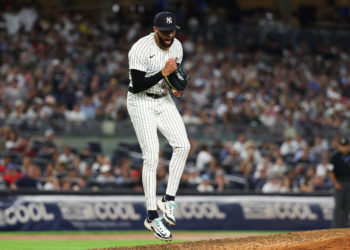Ask around various civil society organizations working in the Middle East and the answer is always the same. “Nobody really knows what’s happening,” one project manager running a Syria-based project told DW about the US cuts in aid funding. “They haven’t put a complete stop to it yet so we’re just spending the money on a monthly basis and hoping for the best.”
“We still don’t know if we’re going to get the funding we were promised this year,” the founder of an Iraqi journalists’ network in Baghdad said. “We probably won’t be able to pay some of our journalists. Right now, we’re approaching other organizations to try to replace the money.”
Neither interviewee wanted their names published because they didn’t want to criticize their donors publicly.
They are not alone. Since US President Donald Trump took power, he has slashed US funding for what’s known as “official development aid,” or ODA. Often simply called foreign aid,the Organization for Economic Cooperation and Developmentdefines ODA as “government aid that promotes and specifically targets the economic development and welfare of developing countries.” ODA can be bilateral — given from country to country — or multilateral, where funds are pooled by an organization like the UN, then disbursed.
The US is not the only country . Even before what insiders described as the US’ “chaotic” budget cuts, reductions in ODA were a longer-term pattern. Global ODA fell by over 7% in 2024, as European nations and the UK also reduced ODA in favor of channeling more money into defense. Last year marked the first time in nearly 30 years that major donors like France, Germany, the UK and the US all cut ODA.
Funding cuts’ impact on the Middle East?
In 2023, countries in the Middle East got around $7.8 billion (€6.7 billion) out of the $42.4 billion (€36.3 billion) the US spent that year.
That is why, Laith Alajlouni, a research associate at the International Institute for Strategic Studies in Bahrain, wrote in March, “the effects of US aid cuts … will be felt deeply in the Middle East, where key US partners continue to rely heavily on US assistance to meet their military and economic needs.”
Between 2014 and 2024, the US pledged around $106.8 billion to countries in the region. Israel gets just under a third of that, although much of the money is earmarked for military purposes. But for other countries, funds from the US were equivalent to a significant portion of their national income, Alajlouni pointed out.
Now funding for emergency food and water in Sudan, medicines in Yemen, children’s nutrition in Lebanon, and camps for the displaced, including families allegedly connected to the extremist “Islamic State” group in are all are at risk, Alajlouni argues.
Other countries, like Jordan and Egypt, are heavily reliant on foreign funding for “economic development” to keep their ailing economies afloat, he noted.
It remains unclear exactly how much Middle Eastern countries will lose due to ODA cuts. Last month, researchers at Washington-based think tank, the Center for Global Development, tried to calculate the fallout. “Some countries are projected to lose large amounts of ODA simply because of who their main donors are,” they noted, “while others are projected to lose very little.”
For example, Yemen will likely see its ODA reduced by 19% between 2023 and 2026. In 2025, its three biggest donors, via the UN’s Office for the Coordination of Humanitarian Affairs, or UNOCHA, were Saudi Arabia, the EU and the UK. Somalia, on the other hand may lose as much as 39%. Its main donors, via UNOCHA, were the UK, the EU and the US.
Who pays for aid in the Middle East now?
“It is clear that in the short term, the shortfall in aid funding will not be closed,” Vincenzo Bollettino, director of the resilient communities program at Harvard University’s Humanitarian Initiative in Boston, told DW. “In the mid-to-long term, it’s likely there will be a tapestry of different forms of aid.”
Part of that will be a larger number of states “providing aid and development assistance where it aligns with their own political objectives,” Bollettino predicts.
Russia’s main agency for international cooperation, Rossotrudnichestvo, recently announced it would restructure to be more like USAID and will open outposts in the UAE and Saudi Arabia. But at just $70 million annually, Rossotrudnichestvo’s budget is comparatively small.
Chinese money could be another alternative to US and European funding. “China has positioned itself as the US’ greatest competitor in global development,” experts at US think tank, the Center for Strategic and International Studies, warned in July.
But China isn’t all that interested in the Middle East, experts point out, and is more engaged in Southeast Asia and Africa.
“Neither Russia nor China have played traditionally significant roles in the international humanitarian aid system and this is unlikely to change anytime soon,” Bollettino explains.
How aid became more political
Much more likely donors in the Middle East will be the wealthy Gulf states, says Markus Loewe, a professor and the coordinator for research on the Middle East and North Africa at the German Institute of Development and Sustainability, or IDOS.
Over the last two decades, four Gulf states — , the , and — have been internationally significant donors.
“For example, is already offering substantial support to Syria,” Loewe told DW. “They have been supporting Lebanon to quite a degree and they would definitely be ready to pay a lot of the costs of reconstruction in Gaza, provided there is an acceptable agreement on a ceasefire.”
Most of that ODA has gone to , although Qatar and Kuwait have also funded work in Turkey, Afghanistan and some African countries.
Hardly any Gulf money goes into what are called “pooled” funds like those run by the UN. Most is bilateral, from country to country, because the Gulf states tend to use their ODA in a more transactional way. That is, as a diplomatic tool where it ties into different Gulf states’ often-competing foreign policy aims.
“Aid recipients who are considered politically important for Gulf donors tend to receive more aid,” Khaled AlMezaini, a professor at the UAE’s Zayed University, wrote in a recent analysis. For example, despite waging war on parts of Yemen from 2015, Saudi Arabia and the UAE were also the country’s biggest donors.
But as Harvard’s Bollettino points out, ODA is not meant to be political. That goes against basic humanitarian principles of neutrality and impartiality.
“The essential problem with instrumentalized aid is that it’s just as likely to be a catalyst of conflict and violence as a source of peace and security,” he argues. “The so-called Gaza Humanitarian Foundation — where ‘humanitarian aid’ being delivered to starving civilians has resulted in hundreds of Palestinians being killed — is a case in point.”
Edited by: Jess Smee
The post After huge US cuts, who pays for aid in the Middle East now? appeared first on Deutsche Welle.




